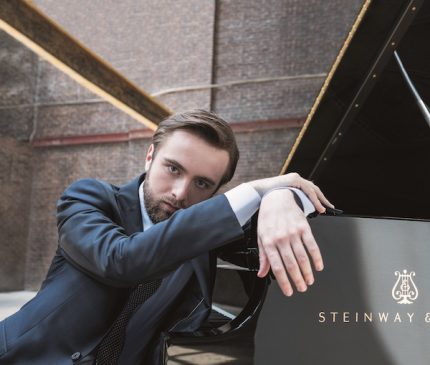Trifonov’s rare artistry illuminates Bach’s rarely heard “Art of Fugue”

If the 60-degree weather on Sunday offered hope that another Chicago winter may be coming to an end, there was also the additional spring harbinger of Daniil Trifonov’s return to Orchestra Hall.
This time the gifted young Russian pianist brought a recital devoted entirely to music of Johann Sebastian Bach. Trifonov’s revised program proved even more concentrated than the one scheduled, with most of the afternoon focused on a complete performance of Bach’s The Art of Fugue.
He began with Brahms’ left-hand arrangement of Bach’s mighty Chaconne for solo violin (from the Partita No. 2 in D minor). Brahms’ reduction is masterful, packing a remarkable amount of the music and contrapuntal voices allotted to four strings into music for just five digits.
Trifonov proved as compelling in music of Bach as in the Romantic repertoire in which he is heard most frequently. From the forceful initial statement of the Chaconne theme, the epic set of variations unfolded in a natural and fluent fashion, each section leaning into the next in a seemingly inevitable manner. The quicker variations were typically dazzling in their speed and contrapuntal clarity, the ascent to the central climax powerful without feeling out of scale. The pianist likewise conveyed the musing quality of the slower variations, not least the hushed, searching expression he brought to the interior passage following that central declamation.
The pianist segued so smoothly from the final notes of the Chaconne directly into The Art of Fugue that inattentive audience members may have missed the transition were it not for Trifonov now playing with both hands.
For much of its history Die Kunst Der Fuge (comprised of fourteen large-scale fugues or, here, Contrapuncti) was regarded as an arcane intellectual exercise of Bach’s final years. The lack of instrumentation indication and the fact that Bach didn’t live to complete the massive four-part final fugue (based on his name) for many lent BWV 1080 an air of ascetic mystery.
Trifonov’s remarkable performance—spread over the program’s two halves— amounted to a whole-scale rescue of The Art of Fugue from any lingering belief that its rightful place was on a dusty back shelf of the music library. Rather than dry, dull or severe, in Trifonov’s hands the music felt fresh, richly varied and wondrously alive–as if a long-lost Bach work had recently been discovered.
There was no sense of the fugal sewing machine, as can be the case with lesser Bach interpreters. Trifonov’s wide and nuanced range of colors, dynamics and expression consistently illuminated this rarely performed score. The stately fugues has apt poise and somber dignity yet the quicker Contrapuncti went with quicksilver rhythms and an almost jazz-like swing. Far from being austere, there was an exhilarating spontaneity to Sunday’s performance as one waited with anticipation to see what Trifonov would do with the next fugue, be it hushed intimacy or dazzling bravura.
Even in the most complex contrapuntal thickets, the delineation of inner voices was always clear and balanced. Most of all there was a confiding quality to Trifonov’s performance, drawing the audience in like a great storyteller (granted, some became restive in the latter stages Sunday). The pianist provided his own cogent and brilliant completion to the unfinished Contrapunctus XIV, and built this finale into a stunning fugal display that was not only thrilling but noble and majestic.
Once again, Trifonov elected not to break the spell, artfully segueing into his final selection Jesu, Joy of Man’s Desiring (Dame Myra Hess arrangement), which felt like spiritual balm, fading away the final bars in playing of ineffable tenderness.
Yet Trifonov was not done. He closed the afternoon, aptly, with three encores, offering an enticing sampler from J.S. Bach’s musical progeny: a supple, piquant rendering of the Allegro from Johann Christian Bach’s Sonata in A Major; Wilhelm Friedemann Bach’s lovely Polonaise No. 8 in E Minor, given a rapt performance of the utmost delicacy; and a witty, playful account of Carl Philipp Emanuel Bach’s typically quirky Rondo in C Minor.
Sir András Schiff performs the next installment in Symphony Center’s complete Beethoven Sonatas series 3 p.m. March 29. On the program are the Sonatas Nos. 12, 13, 14 (“Moonlight”) and 15 (“Pastoral”). cso.org; 312-294-3000
Posted in Performances





Posted Mar 02, 2020 at 6:03 pm by Jim Hall
I was there, in awe, experiencing the majesty, tenderness, understanding, and execution of his concerption of Bach, Bach/Brahms, Bach/Hess, and the sons of Bach. For me, it was yet another confirmation of the existence of God to hear him play, as if God put him here to remind himself of just how beautiful life on this Earth can be.